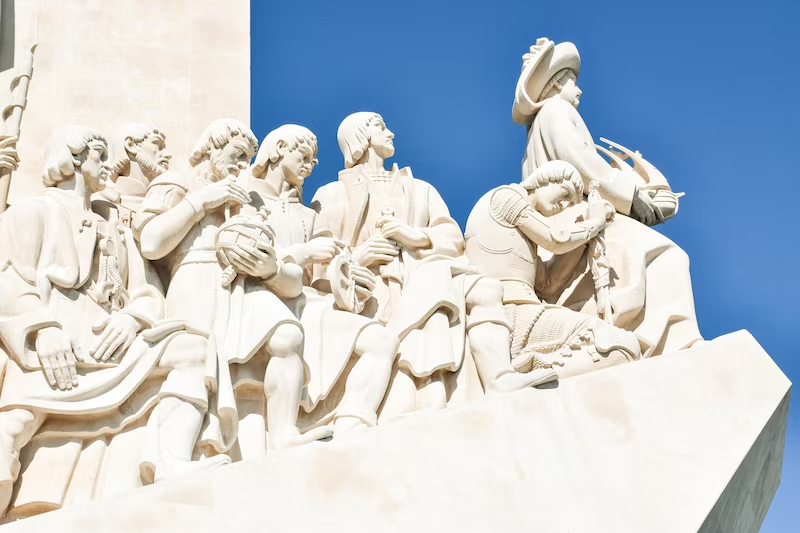Unraveling Lisbon's Historical and Maritime Heritage

Lisbon, the sun-kissed Portuguese capital, is not just a city of stunning vistas and delightful cuisine; it's a treasure trove of history and maritime heritage. This vibrant metropolis, known for its significant role as a Roman province of Lusitania, has evolved through the centuries to become the dynamic city of Lisbon we know today. As we embark on a journey to discover Lisbon, we'll delve deep into the history of Lisbon, exploring its transformation from an ancient settlement to a crucial hub of maritime exploration.
Lisbon’s maritime heritage plays a pivotal role in the story of this captivating city, shaping its culture, architecture, and spirit. Join us as we uncover the layers of Lisbon's past, from the historical streets of Alfama to the grandeur of the Jerónimos Monastery, and witness how the rich tapestry of the city's history has woven the vibrant fabric of de Lisboa Lisbon.
For travelers eager to delve into Lisbon's rich history and explore its connections with regions like North Africa, Lisbon Nannybag luggage storage provides an ideal solution.
With various locations across the city, Nannybag offers a convenient and secure way to store your luggage, allowing you to wander through Lisbon's historical sites unburdened. Whether you're tracing the city's maritime routes that once linked Europe to North Africa or wandering through ancient streets, Nannybag ensures your journey through Lisbon’s heritage is comfortable and hassle-free. This service is especially useful for those who want to immerse themselves in the city's past without the inconvenience of carrying their bags.
Lisbon’s Rich Tapestry of History
Lisbon's journey as a maritime power began in earnest in the 15th century, marking the dawn of Portugal's Age of Discoveries. From Lisbon's harbors, intrepid explorers like Prince Henry the Navigator and Vasco da Gama embarked on voyages that would reshape the world's map.
These explorations brought Lisbon immense wealth and cultural diversity. They positioned it as a crucial hub in global trade routes, linking Europe with the riches of Africa, Asia, and the Americas. This era transformed Lisbon into a cosmopolitan melting pot and laid the foundations for its rich cultural tapestry.
Castelo de São Jorge: A Sentinel of History
With its Moorish origins, this fortress has witnessed centuries of Lisbon's history, including the Christian Reconquest and the Age of Discovery. Visitors walk through its ancient walls and towers and are transported back in time. The castle offers panoramic views of Lisbon and the Tagus River and glimpses into the city's past, from its days as a Roman outpost to its current status as a vibrant European capital.
Monument to the Discoveries: A Nautical Tribute
In Belém, alongside the Tagus River, stands the Monument to the Discoveries. This monumental tribute celebrates the Portuguese explorers who bravely navigated uncharted waters, forging new connections between Europe, Africa, and the Americas. The monument features statues of historical figures like Henry the Navigator and Vasco da Gama. It is a powerful representation of Lisbon’s maritime legacy and its role in shaping the interconnected world as recognized by the European Union today.

Lisbon Through the Ages
Roman Lusitania to the Estado Novo
The story of Lisbon is one of extraordinary transformation, beginning as a Roman settlement in the province of Lusitania and evolving through various epochs. The city has witnessed the rise and fall of empires, the flourishing of global exploration, and significant political upheavals.
The Estado Novo regime, an authoritarian chapter in Portugal’s history, and the peaceful Carnation Revolution on 25 April 1974, which marked a return to democracy, left indelible marks on Lisbon's character. This historical journey has shaped Lisbon into a vibrant, modern city that still reveres its rich and complex past.
UNESCO World Heritage Sites: Timeless Wonders
Lisbon's landscape is adorned with UNESCO World Heritage Sites that embody its historical and cultural legacy. The Tower of Belém and the Jerónimos Monastery, both epitomes of the Manueline architectural style, are stunning landmarks and symbols of the Age of Discoveries when Lisbon was the center of a global empire. These sites, along with others like the Pena Palace in nearby Sintra, offer a window into different eras of Lisbon's past, from maritime glory to royal opulence.
Rossio Square: The Heart of Lisbon
Rossio Square, known formally as Praça Dom Pedro IV, has long been the beating heart of Lisbon. The square has witnessed Lisbon's dynamic history, from medieval public gatherings and celebrations to being the stage for popular revolts and celebrations. Rossio is a lively hub, teeming with cafes, theaters, and shops today.
The square's iconic wave-patterned cobblestones, fountains, and the impressive National Theatre D. Maria II at its northern facade make it a bustling intersection where the historical narrative of Lisbon unfolds daily amidst the pulse of contemporary city life.

Maritime Lisbon: A Journey Through Time
The Age of Exploration in the 16th Century
The 16th century Lisbon marked a pivotal era known as its golden age of exploration. During this time, Lisbon was the epicenter of a global maritime empire, with explorers like Vasco da Gama and Ferdinand Magellan setting sail from its ports to discover new worlds.
This period saw the city flourish like never before, becoming a bustling trade and commerce center. Ships laden with spices, gold, and other exotic commodities from Africa, Asia, and the New World returned to Lisbon, filling the city with unimaginable wealth and turning it into one of the most important cities in Europe. The impact of this era is still visible in the city's rich architectural heritage and cultural diversity.
Casa da Guiné: Remnants of a Trading Empire
The Casa da Guiné holds a significant place in Lisbon's maritime history. As the focal point of trade with Africa, it played a crucial role in the economic and cultural exchanges that defined Lisbon during the Age of Exploration. This building was the center for managing and regulating the lucrative trade routes between Portugal and its African colonies.
Today, the Casa da Guiné remnants stand as a testament to Lisbon's past as a powerful trading empire, reminding us of the city's historical ties with different parts of the world. It embodies the city's legacy as a major player in the global trade network and its influence on global commerce and navigation.
Maritime Museum: Chronicling Lisbon’s Nautical Past
The Maritime Museum in the Belém district further chronicles Lisbon's rich maritime history. The museum showcases a vast collection of historical ships, maritime artifacts, and navigational instruments, offering insights into Portugal's seafaring triumphs and tragedies. It tells the story of Lisbon's evolution from a coastal city to a global maritime power and celebrates the adventurers who navigated uncharted waters, shaping the course of history.
Jerónimos Monastery: Monument of the Discoveries
The Jerónimos Monastery, another key landmark in Belém, is intrinsically linked to Lisbon’s maritime past. Built to commemorate Vasco da Gama's voyage to India, it symbolizes the wealth and power Portugal gained through its discoveries. The monastery's ornate Manueline architecture is adorned with carvings of maritime motifs, a tribute to the sailors and explorers who departed from Lisbon's shores.

Say hello to exploring and goodbye to heavy bags!
What if you could enjoy every minute in the city without the burden of your bags?
- Safe luggage storage for a flat daily price of € 4,50/luggage item
- Included luggage protection of up to €10000 in case of breakage, loss or theft
